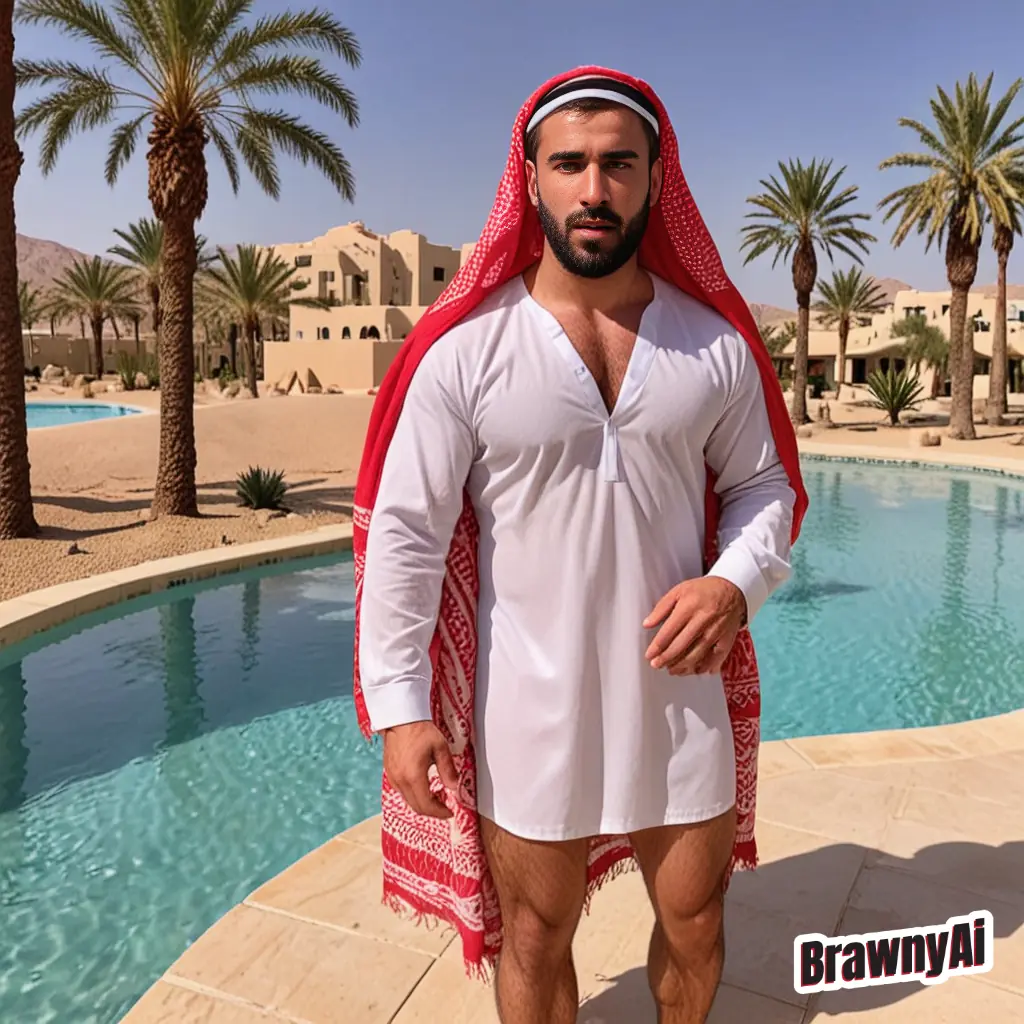🔒BrawnyAi’s Middle Eastern Digital Hunks: A Bold Exploration

BrawnyAi's Middle Eastern hunks are good example of our commitment to showcase underrepresented ideas. Almost all media displays arabs wearing thobes and keffiyeh with very conservative style. Men wearing thobes have the whole body covered and the keffiyeh covers the head so we don't really know what's the hair cut of a person using it. There are obviously reasons for that. Most of the Middle East countries consider homosexuality a deviant behavior and some countries have even capital punishment for being gay. So people tend to show less skin or act in provocative ways because they could go to jail.
Our work is not to provoke any specific country or groups of people, instead we challenge the idea that men in this country can only have one type of look. Instead, our mission is to spark people's fantasy, imagination and creativity and by showing our Arab digital hunks in ways never seen before.

The ideal in the Middle East is to dress modestly but for each country, that means different things. Also, the age, location, and social class influence the way how men dress. Simplifying a lot, the younger the people, and the wealthier they are, they will tend to dress with Western style clothing. On the opposite spectrum, the older generation and people who live in smaller towns and rural area will tend to wear traditional clothes where they are protected against the sun, wind and sand. Finally, a pair of sunglasses can help them identify the wearer's social class.
Our Middle East digital hunks are more closely related to people who live in the Gulf area where they wear the keffiyeh with agal tying up the headscarf into their heads. The white robe is called thobe and interestingly, not all countries in the Middle East use that.



Moving back about Middle East and homosexuality, Quran clearly shows that it's forbidden through the story of Prophet Lut in the destruction of Sodom and Gomorrah. Prophet Lut is sent to Sodom and Gomorrah to guide them away from their sinful ways like the practice of homosexuality. The people of Sodom continue their practices and Allah unleashed a catastrophic punishment destroying the city and its inhabitants.
Interestingly, there was no concept of a person being homosexual like in the concept we have today. This opens the possibility that if a man fulfills its duty of being part of a family and have children there is no dishonors or issue with it. There are some stories of Arab monarchs with preferences to have male lovers. Examples could be between the monarch and his slave soldiers.
Also, in the Islamic world, it's rare to see homosexuality relationships between two people of similar social class. Most of the time, it's between people from different classes.

Throughout multiple eras in the Arab world, we could say that even homosexuality was not accepted the act itself was considered to be open secret. During the Suleiyman the magnificent in the Ottoman Empire, people caught with homosexuality act could receive fines, interestingly enough, in England and Germany, those same acts could lead to death sentences!
In someways, during the early 20th century with the colonization by England and other Western power, their views against homosexuality were spread throughout the world and in a twisted way, that still have great negative influence about homosexuality, leading to many countries to create strict laws and even death sentences against gay people.
It's very important to understand the history of how certain cultures deal with this subject because generating images of Middle Eastern digital hunks without the historical context can lead to great misunderstanding and display ignorance. Instead, it's important to know what happened so we can incorporate these historical nuance and then, we can reinterpret these delicate subjects so we can discuss with reason and context.





